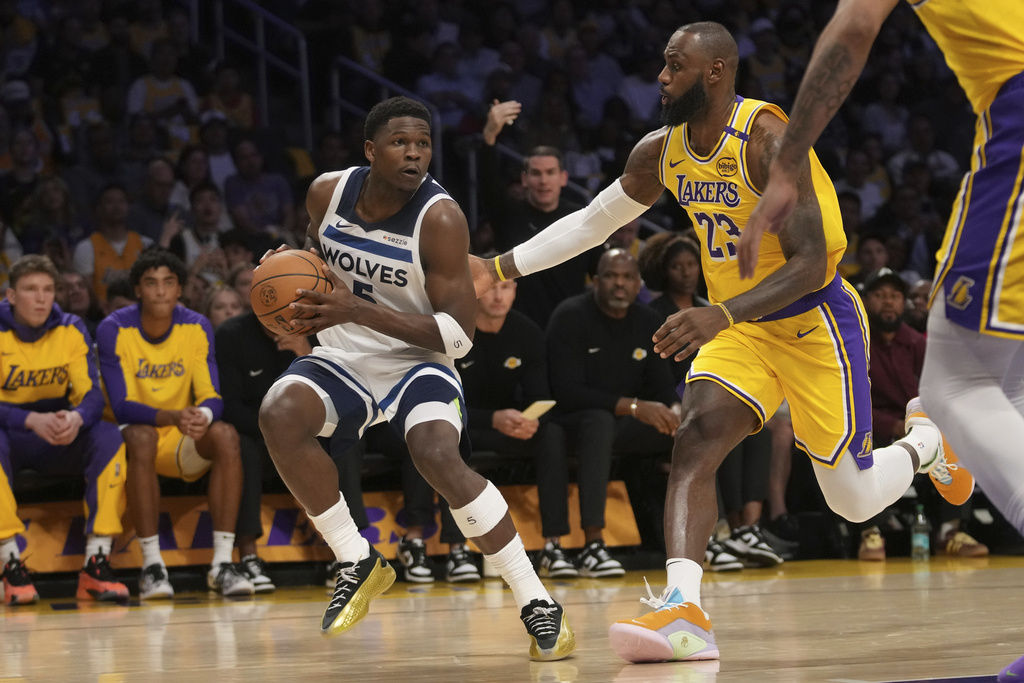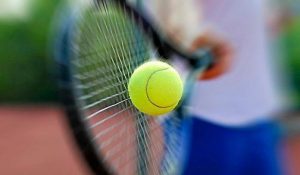
Timberwolves reverted to their default offensive setting in Tuesday’s season opener: Ball holding and over dribbling. How long will it take to reprogram?
All preseason long, Timberwolves coach Chris Finch offered little warnings as his own way of tempering the optimism surrounding the team’s offensive performance.
Minnesota was moving the basketball freely, playing with pristine spacing and excellent shot selection. As a result, the offense rolled. It was Finch-Ball 101, and, after a rough last couple of seasons on that end of the floor, how to play offense had finally clicked with the current core.
Right?
Not in the coach’s mind. After another stunning offensive outburst in a preseason win over Philadelphia in Iowa, Finch was asked if he was surprised by how good the offense looked so early in the exhibition slate.
“No. We looked like this last year, too,” Finch said. “Then, when the season started, the ball got sticky.”
At another point in training camp, the coach reiterated: “when they start counting things for real, human nature takes over.”
It did a year ago, as Minnesota’s offense fell apart the moment the opening tip took place to kick off the regular season. And Tuesday’s loss in Los Angeles was an eerily similar experience.
After his off-ball play was talked up all training camp, Anthony Edwards’ primary action in the opener was the dribble. He and Julius Randle were ball stoppers. No rhythm was ever established in the offense. When there is no flow to what you’re doing, no one knows the rhyme or reason as to when or why they’ll get the ball, if they’ll ever touch it. That makes it difficult for anyone to find a groove.
The turnover total (16) was high. The assist tally (17) was not.
Finch’s fears were realized.
“It was my biggest fear from an offensive point of view, exactly what we did last year. Came out, Game 1, ball got super sticky,” Finch told reporters. “Those turnovers were mostly a result of just trying to do everything 1-on-5. Really disconnected. Like all the flow, rhythm, good will that we built up offensively through the preseason, we just didn’t have it. Then when we were able to have some open looks, they didn’t go in for the large part there. We didn’t generate enough good ones for us to be able to catch any rhythm.”
Edwards didn’t view events with the same perspective. He felt he did “a good job” getting off the ball, even though he didn’t record an assist until the fourth quarter when the Lakers threw blatant double teams at him for a few consecutive possessions. The 23-year-old guard said Minnesota got “great looks,” even if the eye test suggests otherwise on a night where the guard’s 27 points required 25 shot attempts. He went 2 for 9 over the final eight minutes of play.
“I thought we had some early stuff against their gap help. Things that we had been picking up, we just didn’t tonight. Of course the ball is in his hands a lot, so we’re going to need him to move it,” Finch said. “We struggled to get assisted baskets tonight, and that’s the key to any good offense.”
Finch noted guys were “too into their own game” in the defeat, adding the natural or instinctual play wasn’t made within the offense. But that may be part of the issue. The default for guys like Edwards and even Randle — and before him, Karl-Anthony Towns — is to dribble or hold the ball and survey the defense in an attempt to find your own offense.
That approach breeds stagnancy, even if those long, drawn out isolation attacks conclude with a kickout to a teammate. It’s bad basketball and not the way this team’s offense is meant to function. Yet it’s proven to be the default setting for certain players at the outset of each season.
The reason Minnesota’s offense has taken time to click in recent seasons is because the bad habits that fight their way back into the picture have to again be reprogrammed through consistent film study and instruction. In that past, that process has taken at least 20 games — and often far longer — before real progress is shown.
These Timberwolves hope it doesn’t take quite so long this time around, but it’s up to the guys who have the ball in their hands most often to make that determination.
“Just keep the ball moving. Simple. The spacing will help, but keep our flow, keep our aggressiveness attacking the basket and then just making the easy, right play,” Wolves center Rudy Gobert said. “Every time we moved the ball side to side, we got great shots. It’s about consistency. It’s about being able to do it over and over. We’ll get there.”
Los Angeles Lakers forward Anthony Davis (3) blocks a shot by Minnesota Timberwolves center Rudy Gobert (27) during the first half of an NBA basketball game, Tuesday, Oct. 22, 2024, in Los Angeles. (AP Photo/Eric Thayer)
Related Articles
Timberwolves deliver a clunker in every respect in season-opening loss to Lakers
Rudy Gobert agrees to three-year extension with Timberwolves
In Donte DiVincenzo, Timberwolves feel they have a ‘priceless’ talent, at perhaps the perfect time in his career
NBA season preview: We slot the Timberwolves at 59 wins and best in the West. How many does every other team get?
The Timberwolves believe they can ‘easily’ be a top-10 offense this season. Here’s how

